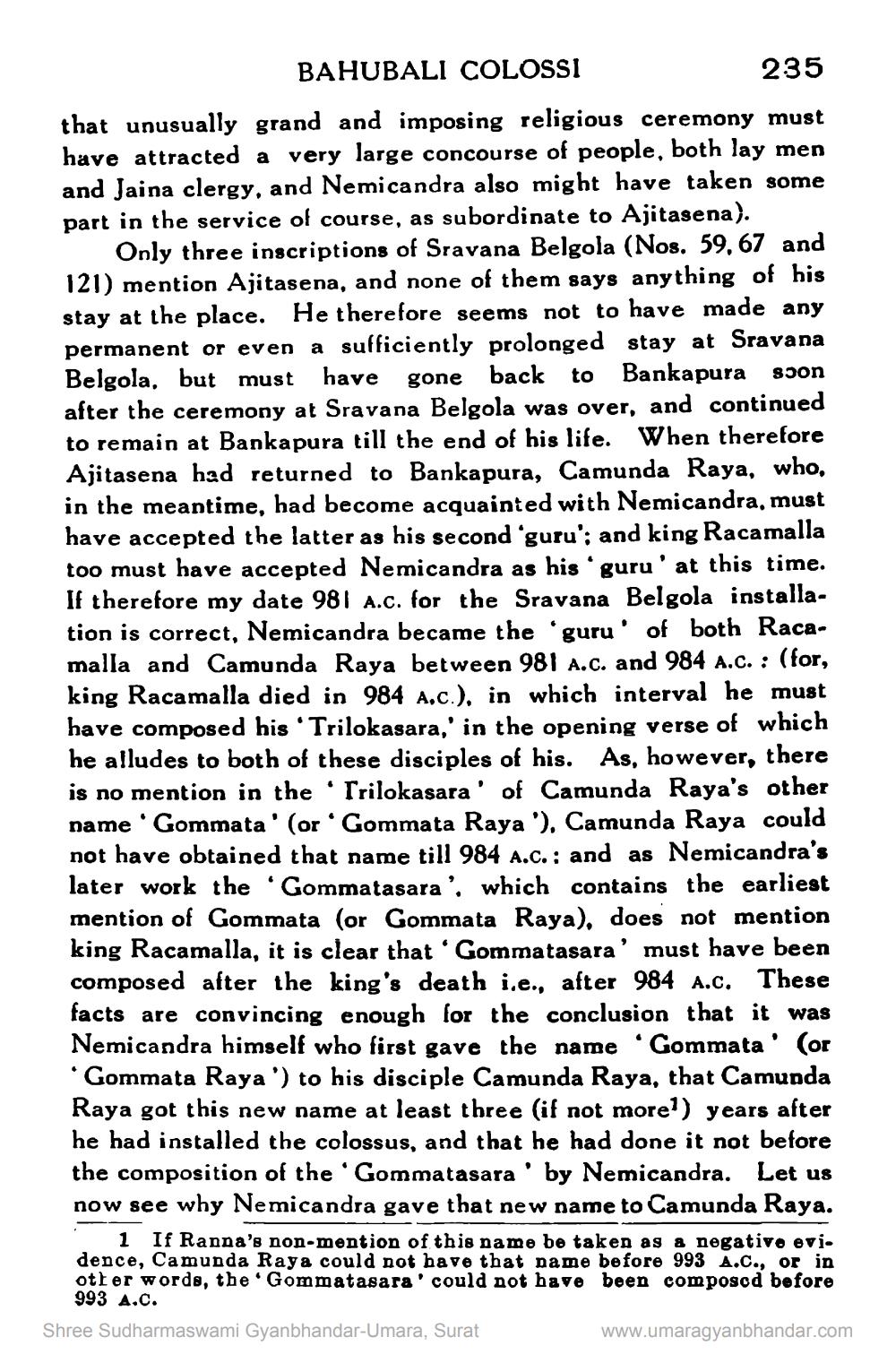________________
BAHUBALI COLOSSI
235 that unusually grand and imposing religious ceremony must have attracted a very large concourse of people, both lay men and Jaina clergy, and Nemicandra also might have taken some part in the service of course, as subordinate to Ajitasena).
Only three inscriptions of Sravana Belgola (Nos. 59,67 and 121) mention Ajitasena, and none of them says anything of his stay at the place. He therefore seems not to have made any permanent or even a sufficiently prolonged stay at Sravana Belgola. but must have gone back to Bankapura soon after the ceremony at Sravana Belgola was over, and continued to remain at Bankapura till the end of his life. When therefore Ajitasena had returned to Bankapura, Camunda Raya, who, in the meantime, had become acquainted with Nemicandra, must have accepted the latter as his second 'guru': and king Racamalla too must have accepted Nemicandra as his 'guru' at this time. If therefore my date 981 A.c. for the Sravana Belgola installation is correct, Nemicandra became the 'guru' of both Racamalla and Camunda Raya between 981 A.C. and 984 a.c. : (for, king Racamalla died in 984 a.c.), in which interval he must have composed his ‘Trilokasara,' in the opening verse of which he alludes to both of these disciples of his. As, however, there is no mention in the 'Trilokasara' of Camunda Raya's other name 'Gommata' (or Gommata Raya '). Camunda Raya could not have obtained that name till 984 A.C. ; and as Nemicandra's later work the 'Gommatasara', which contains the earliest mention of Gommata (or Gommata Raya), does not mention king Racamalla, it is clear that 'Gommatasara' must have been composed after the king's death i.e., after 984 A.c. These facts are convincing enough for the conclusion that it was Nemicandra himself who first gave the name 'Gommata' (or
Gommata Raya ') to his disciple Camunda Raya, that Camunda Raya got this new name at least three (if not more?) years after he had installed the colossus, and that he had done it not before the composition of the 'Gommatasara' by Nemicandra. Let us now see why Nemicandra gave that new name to Camunda Raya.
1 If Ranna's non-mention of this name be taken as a negative evi. dence, Camunda Raya could not have that name before 993 A.C., or in other words, the Gommatasara' could not have been composed before
993 A.C. Shree Sudharmaswami Gyanbhandar-Umara, Surat
www.umaragyanbhandar.com




